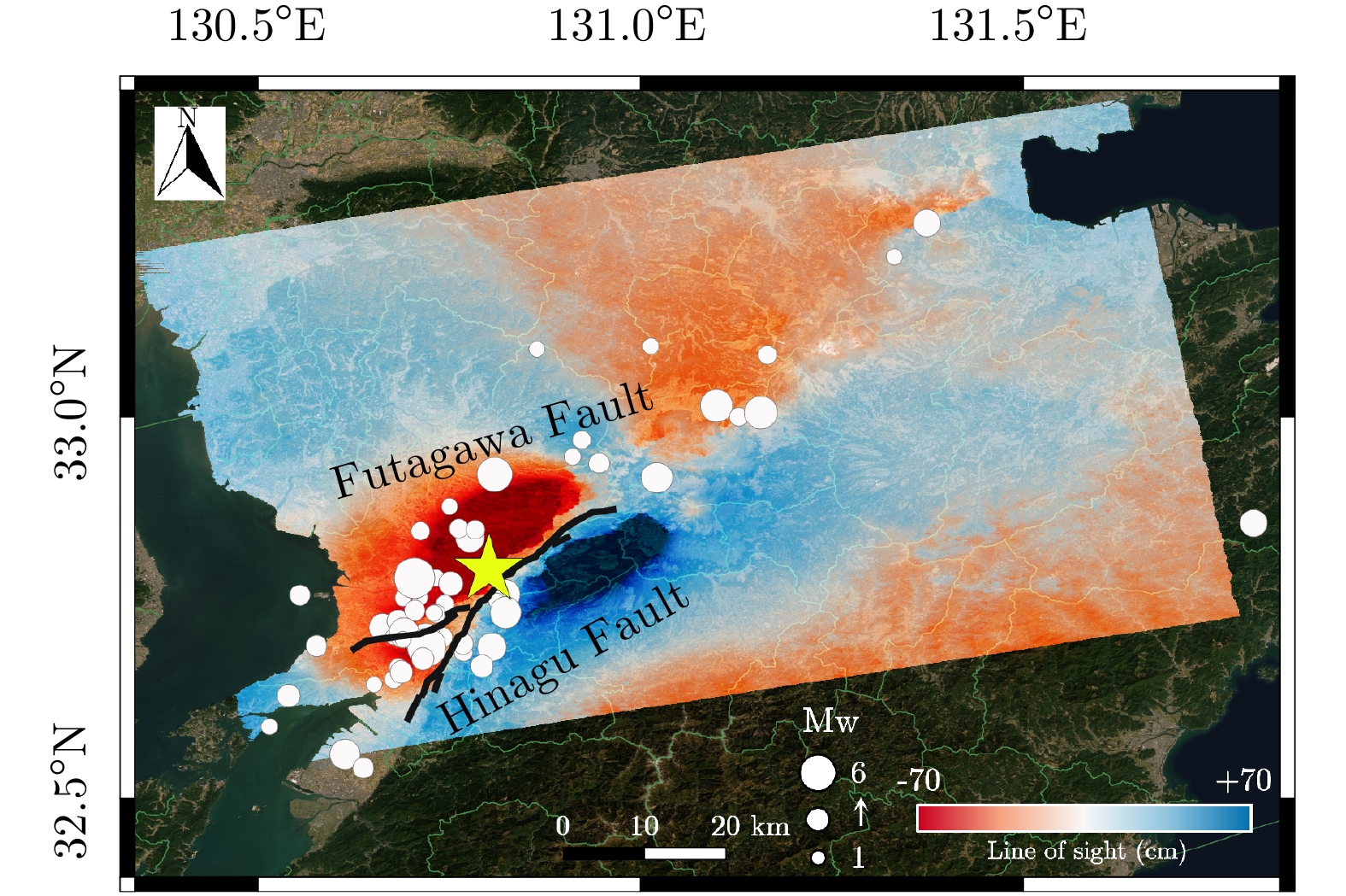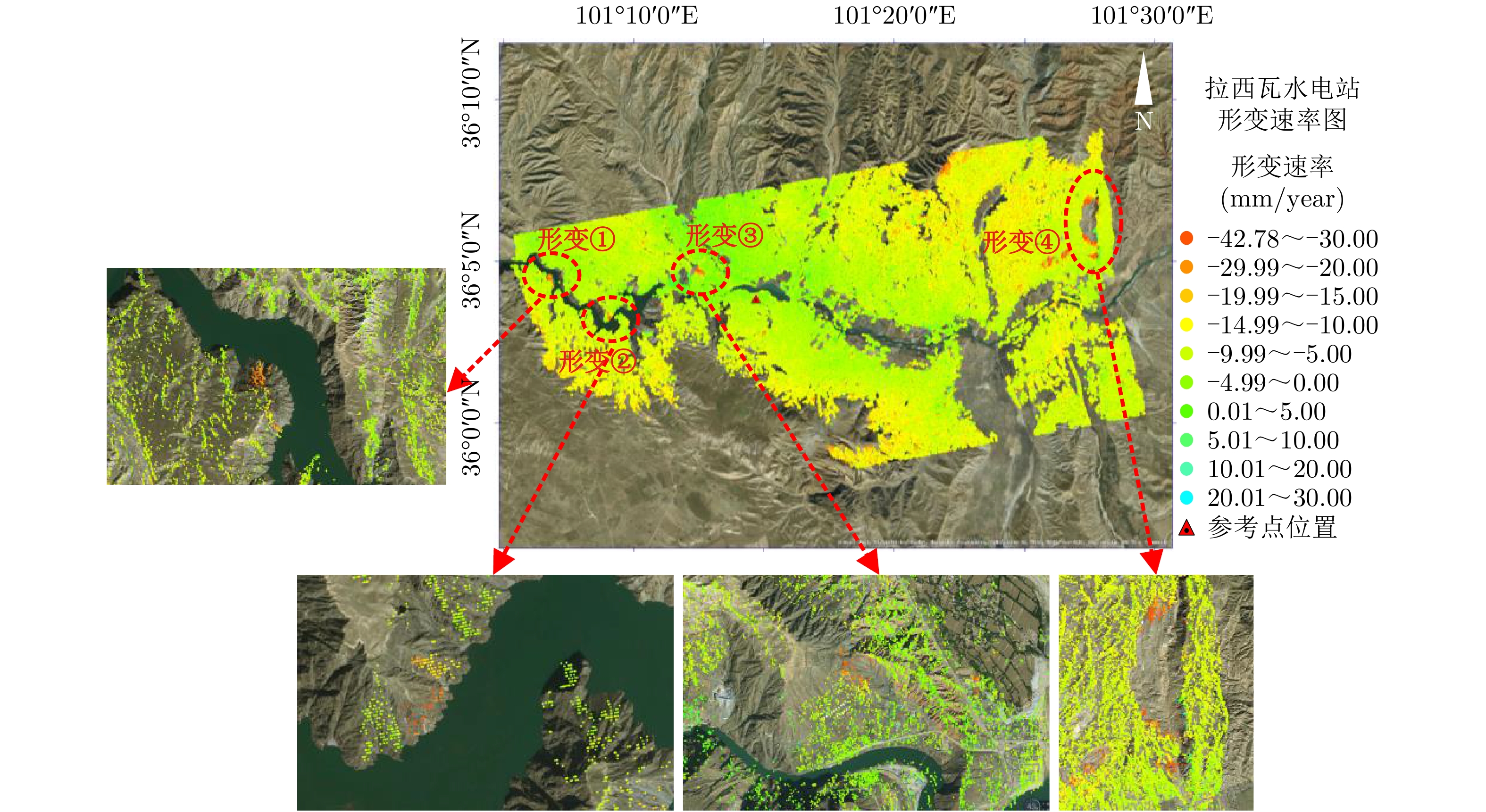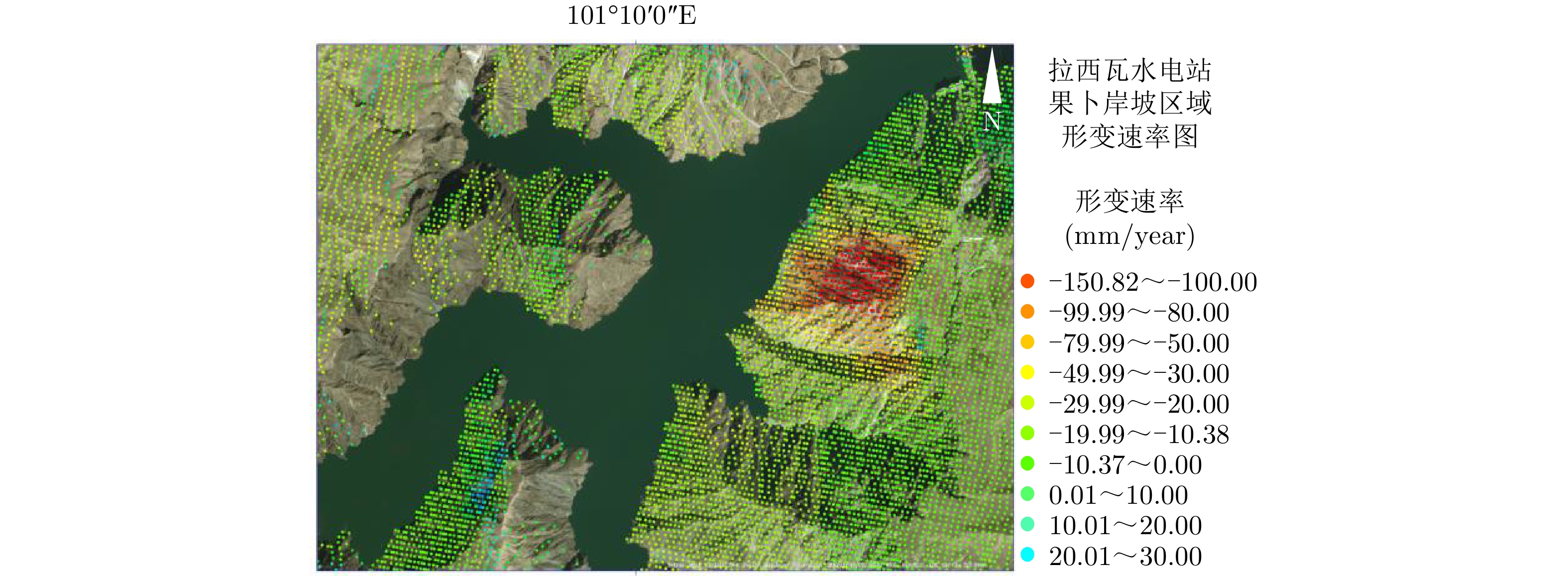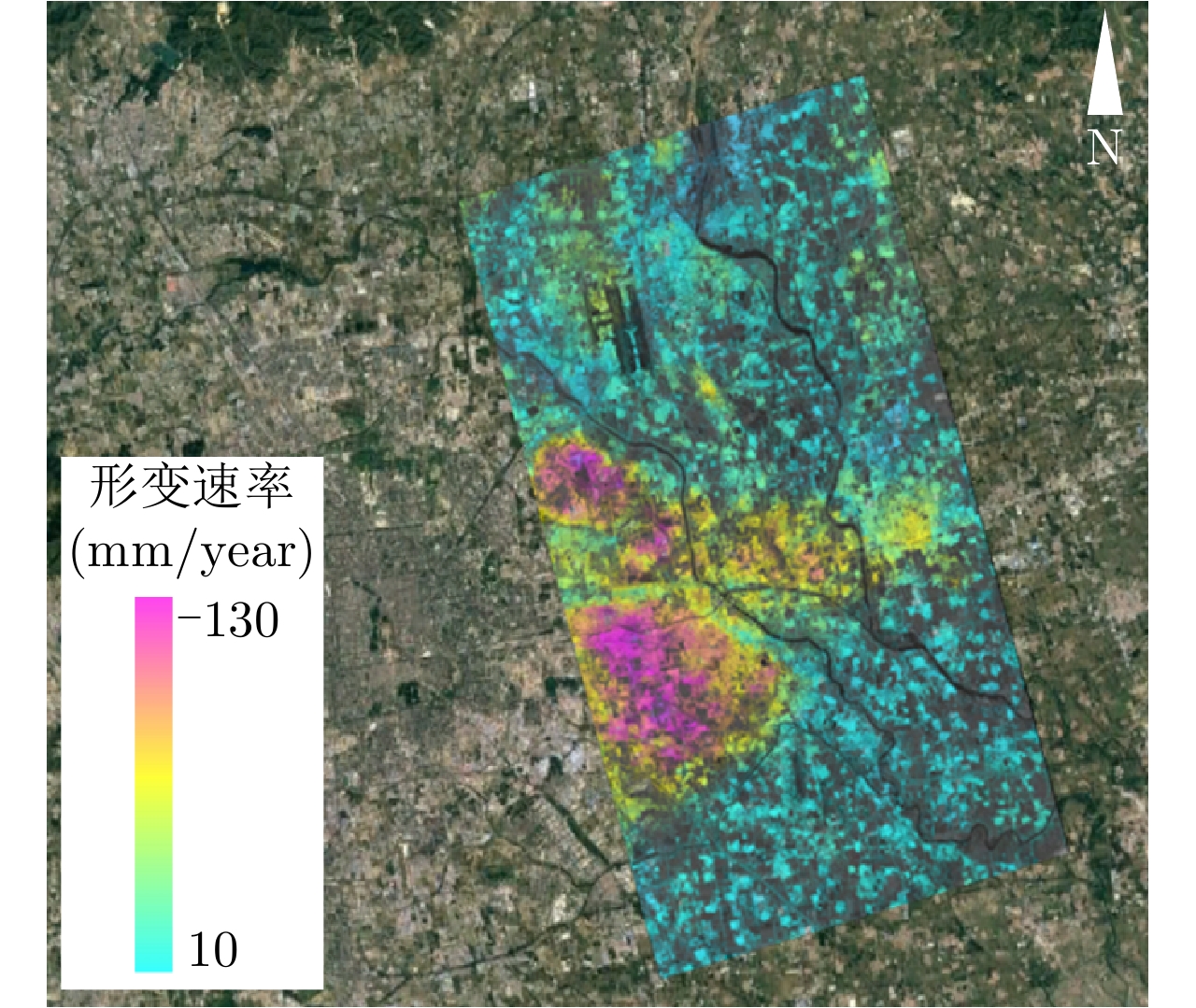| [1] |
WILEY C A. Pulsed doppler radar methods and apparatus[P]. US, 3196436, 1965.
|
| [2] |
廖明生, 林晖. 雷达干涉测量—原理与信号处理基础[M]. 北京: 测绘出版社, 2003: 32–35.
LIAO Mingsheng and LIN Hui. Synthetic Aperture Radar Interferometry—Principle and Signal Processing[M]. Beijing: Surveying and Mapping Press, 2003: 32–35.
|
| [3] |
秦小芳, 张华春, 张衡, 等. TerraSAR-X/TanDEM-X升降轨双基干涉模式获取DEM方法研究[J]. 雷达学报, 2018, 7(4): 487–497. doi: 10.12000/JR18022QIN Xiaofang, ZHANG Huachun, ZHANG Heng, et al. A high precision DEM generation method based on ascending and descending pass TerraSAR-X/TanDEM-X BiSAR data[J]. Journal of Radars, 2018, 7(4): 487–497. doi: 10.12000/JR18022 |
| [4] |
HANSSEN R F. Radar Interferometry: Data Interpretation and Error Analysis[M]. New York: Springer, 2001: 15–16.
|
| [5] |
FERRETTI A, PRATI C, and ROCCA F. Permanent scatterers in SAR interferometry[J]. IEEE Transactions on Geoscience and Remote Sensing, 2001, 39(1): 8–20. doi: 10.1109/36.898661 |
| [6] |
STROZZI T, ANTONOVA S, GÜNTHER F, et al. Sentinel-1 SAR interferometry for surface deformation monitoring in low-land permafrost areas[J]. Remote Sensing, 2018, 10(9): 1360. doi: 10.3390/rs10091360 |
| [7] |
CARLÀ T, INTRIERI E, RASPINI F, et al. Perspectives on the prediction of catastrophic slope failures from satellite InSAR[J]. Scientific Reports, 2019, 9(1): 14137. doi: 10.1038/s41598-019-50792-y |
| [8] |
GRANDIN R, VALLÉE M, and LACASSIN R. Rupture process of the M W 5.8 Pawnee, Oklahoma, earthquake from Sentinel‐1 InSAR and seismological data[J]. Seismological Research Letters, 2017, 88(4): 994–1004. doi: 10.1785/0220160226 |
| [9] |
LEE S and LEE C W. Analysis of the relationship between volcanic eruption and surface deformation in volcanoes of the Alaskan Aleutian Islands using SAR interferometry[J]. Geosciences Journal, 2018, 22(6): 1069–1080. doi: 10.1007/s12303-018-0050-z |
| [10] |
GOLDSTEIN R M, ENGELHARDT H, KAMB B, et al. Satellite radar interferometry for monitoring ice sheet motion: Application to an Antarctic ice stream[J]. Science, 1993, 262(5139): 1525–1530. doi: 10.1126/science.262.5139.1525 |
| [11] |
刘国祥, 陈强, 罗小军, 等. 永久散射体雷达干涉理论与方法[M]. 北京: 科学出版社, 2012: 23–36.
LIU Guoxiang, CHEN Qiang, LUO Xiaojun, et al. Permanent Scatterer Radar Interference Theory and Method[M]. Beijing: Science Press, 2012: 23–36.
|
| [12] |
陈富龙, 林珲, 程世来. 星载雷达干涉测量及时间序列分析的原理、方法与应用[M]. 北京: 科学出版社, 2013: 22–23, 53–56.
CHEN Fulong, LIN Hui, and CHENG Shilai. Principles, Methods and Applications of Spaceborne Radar Interferometry and Time Series Analysis[M]. Beijing: Science Press, 2013: 22–23, 53–56.
|
| [13] |
COSTANTINI M, FALCO S, MALVAROSA F, et al. A new method for identification and analysis of persistent scatterers in series of SAR images[C]. 2008 IEEE International Geoscience and Remote Sensing Symposium, Boston, USA, 2008. doi: 10.1109/IGARSS.2008.4779025. |
| [14] |
WERNER C, WEGMULLER U, STROZZI T, et al. Interferometric point target analysis for deformation mapping[C]. 2003 IEEE International Geoscience and Remote Sensing Symposium, Toulouse, France, 2003. doi: 10.1109/IGARSS.2003.1295516. |
| [15] |
FERRETTI A, FUMAGALLI A, NOVALI F, et al. A new algorithm for processing interferometric data-stacks: SqueeSAR[J]. IEEE Transactions on Geoscience and Remote Sensing, 2011, 49(9): 3460–3470. doi: 10.1109/TGRS.2011.2124465 |
| [16] |
LÜ Xiaolei, YAZICI B, ZEGHAL M, et al. Joint-Scatterer processing for time-series InSAR[J]. IEEE Transactions on Geoscience and Remote Sensing, 2014, 52(11): 7205–7221. doi: 10.1109/TGRS.2014.2309346 |
| [17] |
HOOPER A, ZEBKER H, SEGALL P, et al. A new method for measuring deformation on volcanoes and other natural terrains using InSAR persistent scatterers[J]. Geophysical Research Letters, 2004, 31(23): L23611. doi: 10.1029/2004GL021737 |
| [18] |
KAMPES B and ADAM N. The STUN algorithm for persistent scatterer interferometry[C]. Fringe 2005 Workshop, Frascati, Italy, 2005: 16.
|
| [19] |
BERARDINO P, FORNARO G, LANARI R, et al. A new algorithm for surface deformation monitoring based on small baseline differential SAR interferograms[J]. IEEE Transactions on Geoscience and Remote Sensing, 2002, 40(11): 2375–2383. doi: 10.1109/TGRS.2002.803792 |
| [20] |
BLANCO-SÀNCHEZ P, MALLORQUÍ J J, DUQUE S, et al. The Coherent Pixels Technique (CPT): An advanced DInSAR technique for nonlinear deformation monitoring[J]. Pure and Applied Geophysics, 2008, 165(6): 1167–1193. doi: 10.1007/s00024-008-0352-6 |
| [21] |
CROSETTO M, BIESCAS E, DURO J, et al. Generation of advanced ERS and Envisat interferometric SAR products using the stable point network technique[J]. Photogrammetric Engineering & Remote Sensing, 2008, 74(4): 443–450. doi: 10.14358/PERS.74.4.443 |
| [22] |
FERRETTI A, PRATI C, and ROCCA F. Nonlinear subsidence rate estimation using permanent scatterers in differential SAR interferometry[J]. IEEE Transactions on Geoscience and Remote Sensing, 2000, 38(5): 2202–2212. doi: 10.1109/36.868878 |
| [23] |
PARIZZI A and BRCIC R. Adaptive InSAR stack multilooking exploiting amplitude statistics: A comparison between different techniques and practical results[J]. IEEE Geoscience and Remote Sensing Letters, 2011, 8(3): 441–445. doi: 10.1109/LGRS.2010.2083631 |
| [24] |
MICHEL R, AVOUAC J P, and TABOURY J. Measuring ground displacements from SAR amplitude images: Application to the Landers earthquake[J]. Geophysical Research Letters, 1999, 26(7): 875–878. doi: 10.1029/1999GL900138 |
| [25] |
廖明生, 张路, 史绪国, 等. 滑坡变形雷达遥感监测方法与实践[M]. 北京: 科学出版社, 2017: 103–134.
LIAO Mingsheng, ZHANG Lu, SHI Xuguo, et al. Landslide Deformation Radar Remote Sensing Monitoring Method and Practice[M]. Beijing: Science Press, 2017: 103–134.
|
| [26] |
SIMONS M and ROSEN P A. 3.12-Interferometric synthetic aperture radar geodesy[J]. Treatise on Geophysics (Second Edition) , 2015, 3: 339–385.
|
| [27] |
STROZZI T, LUCKMAN A, MURRAY T, et al. Glacier motion estimation using SAR offset-tracking procedures[J]. IEEE Transactions on Geoscience and Remote Sensing, 2002, 40(11): 2384–2391. doi: 10.1109/TGRS.2002.805079 |
| [28] |
SANDWELL D T and PRICE E J. Phase gradient approach to stacking interferograms[J]. Journal of Geophysical Research: Solid Earth, 1998, 103(B12): 30183–30204. doi: 10.1029/1998JB900008 |
| [29] |
MASSONNET D, ROSSI M, CARMONA C, et al. The displacement field of the Landers earthquake mapped by radar interferometry[J]. Nature, 1993, 364(6433): 138–142. doi: 10.1038/364138a0 |
| [30] |
REID H F. The mechanics of the earthquake, the California earthquake of April 18, 1906[R]. 1910.
|
| [31] |
BONCORI J P M. Measuring coseismic deformation with spaceborne synthetic aperture radar: A Review[J]. Frontiers in Earth Science, 2019, 7: 16. doi: 10.3389/feart.2019.00016 |
| [32] |
MASSONNET D, FEIGL K L, VADON H, et al. Coseismic deformation field of the M=6.7 Northridge, California earthquake of January 17, 1994 recorded by two radar satellites using interferometry[J]. Geophysical Research Letters, 1994, 23(9): 969–972. doi: 10.1029/96GL00729 |
| [33] |
POLLITZ F F, WICKS C, and THATCHER W. Mantle flow beneath a continental strike-slip fault: Postseismic deformation after the 1999 Hector Mine earthquake[J]. Science, 2001, 293(5536): 1814–1818. doi: 10.1126/science.1061361 |
| [34] |
FIELDING E J, TALEBIAN M, ROSEN P A, et al. Surface ruptures and building damage of the 2003 Bam, Iran, earthquake mapped by satellite synthetic aperture radar interferometric correlation[J]. Journal of Geophysical Research: Solid Earth, 2005, 110(B3): B03302. doi: 10.1029/2004JB003299 |
| [35] |
SHEN Zhengkang, SUN Jianbao, ZHANG Peizhen, et al. Slip maxima at fault junctions and rupturing of barriers during the 2008 Wenchuan earthquake[J]. Nature Geoscience, 2009, 2(10): 718–724. doi: 10.1038/ngeo636 |
| [36] |
沈强, 乔学军, 王琪, 等. 中国玉树MW6.9地震InSAR地表形变特征分析[J]. 大地测量与地球动力学, 2010, 30(3): 5–9.
SHEN Qiang, QIAO Xuejun, WANG Qi, et al. Characteristic analysis of coseismic deformation of Yushu MW6.9 earthquake from InSAR images[J]. Journal of Geodesy and Geodynamics, 2010, 30(3): 5–9.
|
| [37] |
WANG Yongzhe. Coseismic slip distribution of the 2011 Tohoku MW6.9 earthquake inferred from GPS and InSAR data[J]. Acta Seismologica Sinica, 2015, 37(5): 796–805. doi: 10.11939/jass.2015.05.008 |
| [38] |
季灵运, 刘传金, 徐晶, 等. 九寨沟 MS7.0地震的InSAR观测及发震构造分析[J]. 地球物理学报, 2017, 60(10): 4069–4082. doi: 10.6038/cjg20171032JI Lingyun, LIU Chuanjin, XU Jing, et al. InSAR observation and inversion of the seismogenic fault for the 2017 Jiuzhaigou MS7.0 earthquake in China[J]. Chinese Journal of Geophysics, 2017, 60(10): 4069–4082. doi: 10.6038/cjg20171032 |
| [39] |
ATZORI S, ANTONIOLI A, TOLOMEI C, et al. InSAR full-resolution analysis of the 2017–2018 M> 6 earthquakes in Mexico[J]. Remote Sensing of Environment, 2019, 234: 111461. doi: 10.1016/j.rse.2019.111461 |
| [40] |
GAUDREAU É, NISSEN E K, BERGMAN E A, et al. The August 2018 Kaktovik earthquakes: Active tectonics in northeastern Alaska revealed with InSAR and seismology[J]. Geophysical Research Letters, 2019, 46(24): 14412–14420. doi: 10.1029/2019GL085651 |
| [41] |
CRUDEN D M. A simple definition of a landslide[J]. Bulletin of the International Association of Engineering Geology, 1991, 43(1): 27–29. doi: 10.1007/BF02590167 |
| [42] |
FRUNEAU B, DELACOURT C, ACHACHE J, et al. Landslide monitoring in south of France with tandem data[C]. Proceedings of the 3rd ERS Symposium on Space at the Service of Our Environment, Florence, Italy, 1997.
|
| [43] |
XIA Ye, KAUFMANN H, GUO X F, et al. Landslide monitoring in the Three Gorges area using D-InSAR and corner reflectors[J]. Photogrammetric Engineering & Remote Sensing, 2004, 70(10): 1167–1172. doi: 10.14358/PERS.70.10.1167 |
| [44] |
DAI Keren, XU Qiang, LI Zhenhong, et al. Post-disaster assessment of 2017 catastrophic Xinmo landslide (China) by spaceborne SAR interferometry[J]. Landslides, 2019, 16(6): 1189–1199. doi: 10.1007/s10346-019-01152-4 |
| [45] |
WANG Guijie, WANG Yunlong, ZANG Xisheng, et al. Locating and monitoring of landslides based on small baseline subset interferometric synthetic aperture radar[J]. Journal of Applied Remote Sensing, 2019, 13(4): 044528. doi: 10.1117/1.JRS.13.044528 |
| [46] |
LI Lingjing, YAO Xin, YAO Jiaming, et al. Analysis of deformation characteristics for a reservoir landslide before and after impoundment by multiple D-InSAR observations at Jinshajiang River, China[J]. Natural Hazards, 2019, 98(2): 719–733. doi: 10.1007/s11069-019-03726-w |
| [47] |
XUE Feiyang and LÜ Xiaolei. Applying time series interferometric synthetic aperture radar and the unscented Kalman filter to predict deformations in Maoxian landslide[J]. Journal of Applied Remote Sensing, 2019, 13(1): 014509. doi: 10.1117/1.JRS.13.014509 |
| [48] |
XU Qiang, DONG Xiujun, and LI Weile. Integrated space-air-ground early detection, monitoring and warning system for potential catastrophic geohazards[J]. Geomatics and Information Science of Wuhan University, 2019, 44(7): 957–966. doi: 10.13203/j.whugis20190088 |
| [49] |
XIAO Ruya and HE Xiufeng. Deformation monitoring of reservoirs and dams using time-series InSAR[J]. Geomatics and Information Science of Wuhan University, 2019, 44(9): 1334–1341. doi: 10.13203/j.whugis20170327 |
| [50] |
WANG Q Q, HUANG Q H, HE N, et al. Displacement monitoring of upper Atbara dam based on time series InSAR[J]. Survey Review, 2019. doi: 10.1080/00396265.2019.1643529 |
| [51] |
LI Menghua, ZHANG Lu, SHI Xuguo, et al. Monitoring active motion of the Guobu landslide near the Laxiwa Hydropower Station in China by time-series point-like targets offset tracking[J]. Remote Sensing of Environment, 2019, 221: 80–93. doi: 10.1016/j.rse.2018.11.006 |
| [52] |
MA Peifeng, WANG Weixi, ZHANG Bowen, et al. Remotely sensing large-and small-scale ground subsidence: A case study of the Guangdong–Hong Kong–Macao Greater Bay Area of China[J]. Remote Sensing of Environment, 2019, 232: 111282. doi: 10.1016/j.rse.2019.111282 |
| [53] |
FAROLFI G, DEL SOLDATO M, BIANCHINI S, et al. A procedure to use GNSS data to calibrate satellite PSI data for the study of subsidence: An example from the north-western Adriatic coast (Italy)[J]. European Journal of Remote Sensing, 2019, 52(sup4): 54–63. doi: 10.1080/22797254.2019.1663710 |
| [54] |
RATEB A and KUO C Y. Quantifying vertical deformation in the Tigris–Euphrates Basin due to the groundwater abstraction: Insights from GRACE and Sentinel-1 satellites[J]. Water, 2019, 11(8): 1658. doi: 10.3390/w11081658 |
| [55] |
胡程, 董锡超, 李元昊. 大气层效应对地球同步轨道SAR系统性能影响研究[J]. 雷达学报, 2018, 7(4): 412–424. doi: 10.12000/JR18032HU Cheng, DONG Xichao, and LI Yuanhao. Atmospheric effects on the performance of geosynchronous orbit SAR systems[J]. Journal of Radars, 2018, 7(4): 412–424. doi: 10.12000/JR18032 |
| [56] |
李亮, 洪峻, 明峰. 电离层对中高轨SAR影响机理研究[J]. 雷达学报, 2017, 6(6): 619–629. doi: 10.12000/JR17016LI Liang, HONG Jun, and MING Feng. Mechanism study of ionospheric effects on medium-earth-orbit SAR[J]. Journal of Radars, 2017, 6(6): 619–629. doi: 10.12000/JR17016 |
| [57] |
CUI Xi’ai, ZENG Qiming, TONG Qingxi, et al. Overview of the atmospheric correction methods in repeat-pass InSAR measurements[J]. Remote Sensing Technology and Application, 2014, 29(1): 9–17. doi: 10.11873/j.issn.1004-0323.2014.1.0009 |
| [58] |
MASSONNET D and FEIGL K L. Discrimination of geophysical phenomena in satellite radar interferograms[J]. Geophysical Research Letters, 1995, 22(12): 1537–1540. doi: 10.1029/95GL00711 |
| [59] |
CROSETTO M, TSCHERNING C C, CRIPPA B, et al. Subsidence monitoring using SAR interferometry: Reduction of the atmospheric effects using stochastic filtering[J]. Geophysical Research Letters, 2002, 29(9): 26-1–26-4. doi: 10.1029/2001GL013544 |
| [60] |
SAASTAMOINEN J. Atmospheric Correction for the Troposphere and Stratosphere in Radio Ranging Satellites[M]. HENRIKSEN S W, MANCINI A, CHOVITZ B H. The Use of Artificial Satellites for Geodesy. New York: The American Geophysical Union, 1972: 247–251. doi: 10.1029/GM015p0247. |
| [61] |
LI Zhenhong. Correction of atmospheric water vapour effects on repeat-pass SAR interferometry using GPS, MODIS and MERIS data[D]. [Ph.D. dissertation], University College London, 2005.
|
| [62] |
YUN Ye, ZENG Qiming, GREEN B W, et al. Mitigating atmospheric effects in InSAR measurements through high-resolution data assimilation and numerical simulations with a weather prediction model[J]. International Journal of Remote Sensing, 2015, 36(8): 2129–2147. doi: 10.1080/01431161.2015.1034894 |
| [63] |
WEGMÜLLER U, STROZZI T, and WERNER C. Ionospheric path delay estimation using split-beam interferometry[C]. 2012 IEEE International Geoscience and Remote Sensing Symposium, Munich, Germany, 2012. doi: 10.1109/IGARSS.2012.6350630. |
| [64] |
JIN Shuanggen and ZHU Wenyao. Analysis of GPS observation data to improve InSAR interferometry precision[J]. Remote Sensing Information, 2001(4): 8–11. doi: 10.3969/j.issn.1000-3177.2001.04.003 |
| [65] |
MATTAR K E and GRAY A L. Reducing ionospheric electron density errors in satellite radar interferometry applications[J]. Canadian Journal of Remote Sensing, 2002, 28(4): 593–600. doi: 10.5589/m02-051 |
| [66] |
SUN Qian, HU Jun, and CHEN Xiaohong. Multi-temporal InSAR techniques and their challenges in the landslides monitoring[J]. Geography and Geo-Information Science, 2019, 35(3): 37–45. doi: 10.3969/j.issn.1672-0504.2019.03.006 |
| [67] |
GAN Jie, HU Jun, LI Zhiwei, et al. Mapping three-dimensional co-seismic surface deformations associated with the 2015 MW7.2 Murghab earthquake based on InSAR and characteristics of crustal strain[J]. Science China Earth Sciences, 2018, 61(10): 1451–1466. doi: 10.1007/s11430-017-9235-4 |
| [68] |
JI Panfeng, LÜ Xiaolei, DOU Fangjia, et al. Fusion of GPS and InSAR data to derive robust 3D deformation maps based on MRF L1-regularization[J]. Remote Sensing Letters, 2020, 11(2): 204–213. doi: 10.1080/2150704X.2019.1701722 |
| [69] |
HU Fengming, VAN LEIJEN F J, CHANG Ling, et al. Monitoring deformation along railway systems combining multi-temporal InSAR and LiDAR data[J]. Remote Sensing, 2019, 11(19): 2298. doi: 10.3390/rs11192298 |
| [70] |
HU J, LI Z W, DING X L, et al. 3D coseismic displacement of 2010 Darfield, New Zealand earthquake estimated from multi-aperture InSAR and D-InSAR measurements[J]. Journal of Geodesy, 2012, 86(11): 1029–1041. doi: 10.1007/s00190-012-0563-6 |
| [71] |
MEHRABI H, VOOSOGHI B, MOTAGH M, et al. Three-dimensional displacement fields from InSAR through Tikhonov regularization and least-squares variance component estimation[J]. Journal of Surveying Engineering, 2019, 145(4): 04019011. doi: 10.1061/(ASCE)SU.1943-5428.0000289 |




 Submit Manuscript
Submit Manuscript Peer Review
Peer Review Editor Work
Editor Work





 DownLoad:
DownLoad:




